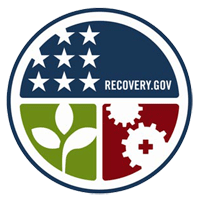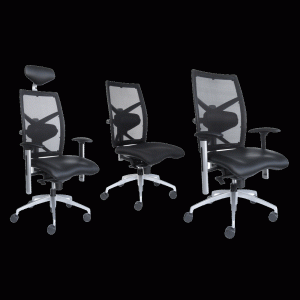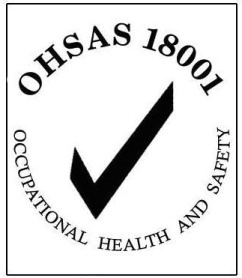Mr. Bill Learns About Construction Safety
Bill learns the importance of using PPE… the HARD WAY!
Bill learns the importance of using PPE… the HARD WAY!
 Tomorrow, Dec. 2nd at 12PM-1PM EST, the IAQ Learning Institute of Pure Air Control Services is conducting a FREE webinar on IAQ/Mold 101 Remediation.
Tomorrow, Dec. 2nd at 12PM-1PM EST, the IAQ Learning Institute of Pure Air Control Services is conducting a FREE webinar on IAQ/Mold 101 Remediation.
RU’s/CEU’s are available. This course has already been approved by the ACAC.
Register HERE
 As the expansion of the use of nanomaterials in industry continues, so does the increasing need to study the potential health effects that are associated with exposure. The National Institute of Environmental Health Sciences (NIEHS) is offering a grant under the American Recovery and Reinvestment Act to fund $5 million per year for the development of models to assess the health effects.
As the expansion of the use of nanomaterials in industry continues, so does the increasing need to study the potential health effects that are associated with exposure. The National Institute of Environmental Health Sciences (NIEHS) is offering a grant under the American Recovery and Reinvestment Act to fund $5 million per year for the development of models to assess the health effects.
According to the NIEHS:
The goal of this initiative is to develop reliable and reproducible methods and models to assess exposure, exposure metrics, and biological response to nanomaterials. The coordinated research effort will include diverse routes of exposure to nanomaterials and in vitro and in vivo models of exposure and response. This research is essential for the harmonization of research results, a scientifically sound basis for hazard assessment, and the safe design and development of ENM. This initiative supports the goals identified by the National Nanotechnology Initiative, Strategy for Nanotechnology-related Environment, Health, and Safety Research.

 The BBC has produced an interesting article detailing some of the ways in which ergonomics has shaped our lives over the years.
The BBC has produced an interesting article detailing some of the ways in which ergonomics has shaped our lives over the years.
From the car, to the office and job site, from packaging, to pretty little things, the concept and application of ergonomics has made the objects and environments in our lives more comfortable.
A selection of the article about Three Mile Island vs. Ergonomics is provided after the break.
With Black Friday looming, OSHA has recently issued a fact sheet on crowd control at retail sales events.
Last year a worker was trampled to death while a mob of shoppers rushed through the doors of a large store to take advantage of an after Thanksgiving Day “Black Friday” sales event. The store was not using the kind of crowd control measures recommended in OSHA’s fact sheet.
“Crowd-related injuries during special retail sales and promotional events have increased during recent years,” said acting Assistant Secretary for OSHA Jordan Barab. “Many of these incidents could be prevented, and this fact sheet provides retail employers with guidelines for avoiding injuries during the holiday shopping season.”
The fact sheet provides employers with recommended elements for crowd control plans. Plans should include having trained security personnel or police officers on site, setting up barricades or rope lines for pedestrians and crowd control well in advance of customers arriving at the store, making sure that barricades are set up so that the customers’ line does not start right at the entrance of the store, preparing an emergency plan that addresses potential dangers, and having security personnel or customer service representatives explain approach and entrance procedures to the arriving public.
Click after the break to download a copy of the fact sheet
 In a survey of 504 occupational health practitioners (including company doctors & nurses), the U.S. Government Accountability Office (GAO) concluded that the government has not done enough to ensure that the reporting has been accurate.
In a survey of 504 occupational health practitioners (including company doctors & nurses), the U.S. Government Accountability Office (GAO) concluded that the government has not done enough to ensure that the reporting has been accurate.
The findings include:
The findings were further complicated by the fact that employees are often rewarded for maintaining “safe-work” environment for long periods of time, thereby reducing reporting.
The GAO is recommending that the Secretary of Labor direct OSHA to do the following:
The interagency task force on Chinese drywall is releasing today the initial results of several studies that begin to assemble pieces in the overall Chinese drywall puzzle. The investigation continues and
additional reports will be released in November.In sum, the three studies released today are:
- Elemental and Chemical Testing: The study of the elemental and chemical composition of 17 drywall samples shows higher concentrations of elemental sulfur and strontium in Chinese drywall than in non-Chinese drywall.
- Chamber Studies: Preliminary results of ongoing testing to detect gases emitted from drywall
in laboratory chambers show higher emissions of total volatile sulfur gases from Chinese than
from non-Chinese drywall.- Indoor Air Studies: Indoor air testing of 10 homes in Florida and Louisiana was conducted to
identify and measure contaminants and to inform a drywall home indoor air testing protocol.
This data from a small sample of homes, allows preliminary observations of certain chemicals in
the indoor air. The tests did not detect the presence or found only very limited or occasional
indications of sulfur compounds of particular interest – hydrogen sulfide, carbon disulfide, and
carbonyl sulfide. Concentrations of two known irritant compounds, acetaldehyde and
formaldehyde, were detected in both homes with and without Chinese drywall, and at
concentrations that could exacerbate conditions such as asthma in sensitive populations. The
levels of formaldehyde were not unusual for new homes, however, and were higher when the
homes were not air conditioned.
Source: Omron STI’s website
Omron STI’s “Gotcha Stick” Safe Distance Scale accurately tests the allowable barrier opening size, based on the distance from the point-of operation as determined by OSHA data. This three-segment stick features English measurements on one side, and Metric measurements on the other. Guarding machinery by means of hard (fixed) barriers is one of the main ways of protecting personnel from point-of-operation hazards. The Gotcha Stick is the easiest means of verifying that openings in hard guarding will not allow the point-of-operation to be accessed by the operator.
Get your Free Gotcha Stick HERE

Source: CDC
November 6, 2009, 11:00 AM
Each week CDC analyzes information about influenza disease activity in the United States and publishes findings of key flu indicators in a report called FluView.* During the week of October 25-31, 2009, a review of the key indictors found that influenza activity remained high in the United States. Below is a summary of the most recent key indicators:
*All data are preliminary and may change as more reports are received.
(Be sure to check out OHShub.com’s Occupational Health & Safety Professional Salary Survey here for detailed salary information provided by professionals like you!)
The Board of Certified Safety Professionals (BCSP), the certification board for those looking to complete or maintain their CSP designation, recently released the results of their 2009 Salary Survey for individuals holding the CSP certification, as well as those with the OHST, and CHST certifications and/or the designation of ASP.
The new database holds a wealth of information including:
You can view the results of the salary survey HERE
Ask the Expert: Elliott Berger, author and editor of The Noise Manual (available at AIHA press or Amazon), recently commented on the use of low attenuation ear plugs for use in industry on the Yahoo Groups AIHA listserv.
In looking over recent posts on low-attenuation earplugs I was pleased to see awareness of the issue of over protection. The E-A-R Hi-Fi earplug was mentioned and indeed that is one moderately priced alternative to obtain less attenuation and a more neutral attenuation characteristic that sounds more natural. Unfortunately there are limited choices in this regard today since there isn’t much pull through from the occupational community. In fact, 3M used to sell the Hi-Fi earplug in the industrial market at the UltraTech (and still does in Europe), but in the US there is so much emphasis on high NRRs that it was difficult to garner interest. Today you can find them at various online retailers.
Another excellent uniform attenuation/moderate attenuation hearing protector, in fact the ultimate embodiment of that style is the Etymotic ER-15 Musician’s earplug. It is truly exceptional but will set you back about $150 per pair. It is cost justified for certain occupations such as musicians where the best fidelity is required. Go to www.etymotic.com to learn more.
To learn more about the effects of HPDs on communications see EARLog 13 found here: http://www.e-a-r.com/hearingconservation/earlog_main.cfm
Elliott H. Berger
Senior Scientist, Auditory Research
3M Occupational Health & Environmental Safety Division
7911 Zionsville Road
Indianapolis, IN 46268-1657
317-692-3031 w
866-428-3942 f
317-752-0614 c
www.E-A-R.com/hearingconservation
Courtesy of Elliott Berger

Often used in conjunction with ISO 14001 (Environmental Management System) OHSAS 18001 2007 is a voluntary occupational health and safety management standard that was developed by the OHSAS Project Group and sets the criteria for health and safety management requirements for various health and safety programs. The goal of OHSAS 18001 is to help organizations and businesses rec0gnize, evaluate and control their health & safety risks and allow a proactive approach by an organization to mitigate those risks.